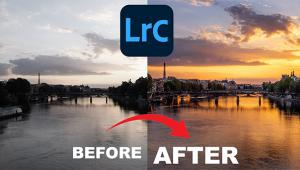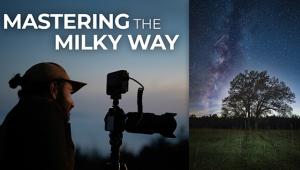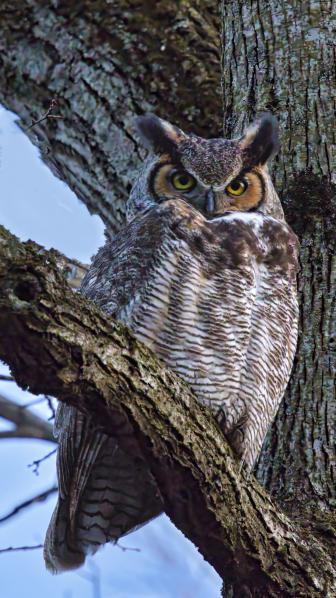Steps Beyond: Mark Alberhasky’s Zone System

A day of making images of beautiful surfers in bikinis wasn’t enough, not when Mark spotted the clues to a very special image. For those thinking about exposure, it was a 1/3200-second shutter speed that captured the columns of water.
All Photos © Mark Alberhasky
A straightforward photo of what everyone else was seeing, no matter how good a photo it was, would be just that: a photo of what everyone else was seeing.
Some photographers are never satisfied.
Mark Alberhasky, for one. Put him in a great situation where he can take very cool photographs and he’ll nail them nine times out of 10. Chances are, though, that won’t be enough. Just because the photos he’s making look good doesn’t mean he won’t be thinking about what he can do to create even better ones. You can attribute that drive to several factors, one of which is his early realization that if he took a straightforward photo of what everyone else was seeing, no matter how good a photo it was, it would be just that: what everyone else was seeing. The goal was to come up with his own ideas and add them to the creative process, and many of Mark’s photos are the result of taking that extra step or two, sometimes for an image he’s taking, sometimes for one that he’s only imagining, and sometimes the step is for a photo that he’s already shot.
Here’s how it works:
Splash. In Puerto Rico on a Mentor Series trek, Mark and his group had photographed three surfers in and out of the water and were calling it day when they came to a long concrete breakfront that picks off waves before they hit the shore. When he noted that about every 90 seconds or so a large wave would hit the wall and explode up in columns of water, he knew the day’s shoot wasn’t quite done. “I held everyone up and asked the girls if they’d pose up on the wall when one of the waves hit. They were okay with that, but when they got up on the 10-inch-wide edge, the middle girl was hesitant to face toward the wave, so she turned and held the hands of the others, and that made the chemistry of the three of them, and the picture, so much more interesting.”
All the elements lined up perfectly for the impressive, colorful, and graphically diverse images of the Aurora Borealis he was able to capture. But still he thought, what more can I do?
Aurora. “Everything came together for my trip to Iceland to photograph the Aurora Borealis,” Mark says. “I did research to find the best time to go and the optimal vantage points.” Add in the fact that there was a solar discharge two days before he left for Iceland and all the elements lined up perfectly for the impressive, colorful, and graphically diverse images he was able to capture when he arrived. But still he thought, what more can I do? “A friend was out there in the distance, shooting on a lower bank of the glacial bay shoreline, and I decided to try something with another light source in the scene. I shouted down to ask him if he’d lay his headlamp on the ground behind him.” A few shouts later they’d dialed in the positioning and Mark got his “what more can I do?” photograph. “Your eye goes to what’s happening in the sky; then you notice something else, and you think, wait, what’s this bright thing that brings my eye to the bottom of the frame?”

Working in another location a few evenings prior to taking this photo, Mark saw how the headlights and taillights of passing cars streaked the scene during long exposures, and the idea for another light source in an aurora image came to him. The exposure here was 13 seconds at f/2.8 and ISO 1000.
Suddenly there was a beautiful set of waves, with spray and foam ripped from the crests by the wind in an image that’s not a document, but rather a separate reality.
Upside, Downside. On a Mentor Trek in Michigan, a fast-moving squall gave Mark and his group a great photo op—that is, if they could handle the 40-mile-per-hour wind gusts that came along with it. Here was brilliant light, quick-changing cloud shapes, and intense colors, and he captured them all in a series of images. But back home, at his computer, he wasn’t as pleased as he’d been on the scene. In a favored image the deep-blue clouds above the lake seemed unreal, and reducing the intensity of the color didn’t work. Then Mark had the idea of turning the photograph 180 degrees to create a different storm story. “Suddenly there was a beautiful set of waves, with spray and foam ripped from the crests by the wind,” he says of an image that’s not a document, but is rather a separate reality.

When the deep blue of the clouds looked too intense to be real, Mark wondered how those clouds would look as waves.
Tearing through the course at 100 miles an hour, he was thinking what an incredible picture it would make if he had other speeding cars chasing him through a curve.
Racing. Several years ago at the Bob Bondurant School of High Performance Driving in Chandler, Arizona, Mark was tearing through the course at 100 miles an hour when he found himself thinking about what an incredible picture it would make if he could have other speeding cars close at hand as he was streaming through a curve. (He was also thinking that he shouldn’t be thinking of pictures he’d like to take while driving at 100 miles an hour.) Afterward he talked to his instructor, and the “I’m a photographer and I have an idea for a really dynamic image” gambit that’s worked since the days of Daguerre worked again. The next day Mark was wedged backwards in a speeding Corvette, leaning out the window as far as he could, photographing a pair of chasing Corvettes. “It’s a weird sensation, speeding backwards,” he says, “but the amazing thing about photography is that you can be involved in things that normally would have you feeling uneasy, but once you put your head in the viewfinder and focus on what you’re trying to pull together, all those other things just dissipate.”

Thanks to the cooperation of three driver/instructors, Mark got the photo he’d imagined. With a wide-angle zoom on his camera (the shot was made at 17mm), Mark’s concern was getting the other drivers to come close. “I had to keep waving them in,” he says. “In this photo there was maybe 5 or 6 feet between me and the lead Corvette.”
Folks were watching and photographing as Mark muscled his kite into the air. “I thought, they can’t see how cool it looks to be holding these strings and having this wild bird under your control in the sky.”
Flight. Folks on the Florida beach were watching and photographing as Mark muscled his kite into the air, and it was the photos he imagined they were getting that gave him the clue to this image. “I thought, they can’t see how cool it looks to be holding these strings and having this wild bird under your control in the sky.” So Mark called over his son, Brandon, and appointed him director of photography. “I told him where to kneel down and where to aim the camera. I wanted my hands to be clearly in the frame, in the lower third so the kite is just at the edge of the upper third. I wanted him to have a clear understanding of what I hoped to get in the frame for a flier’s eye view of the experience.”

Photography wasn’t in the plan for a day of kite flying, and the only camera available when Mark wanted a POV shot was his iPhone. Hey, the best camera is the one…well, you know.
After a day of photographing giraffes in Kenya’s Masai Mara National Reserve, Mark was wondering if he really needed to photograph one more giraffe.
Giraffe. After a day of photographing giraffes in Kenya’s Masai Mara National Reserve, Mark was wondering if he really needed to photograph one more giraffe. “But because you never want to pass up a picture of an animal doing something unique—it could always be better than the last shot—I turned around in the safari vehicle to keep looking. I saw this cloud formation and got my answer: this one was definitely better than the last one, and a lot different, too.”

Mark photographed so many giraffes that day he thought the last thing he needed was another photo of a giraffe. Still, he turned around to check the scene and discovered the best giraffe of all.
“Early on, emerging photographers are so caught up in the mechanics of technique—should I be spot metering? what ISO? what lens?—that there’s no way they can be looking for the clues to the extra steps that will make their photographs better.”
Shadows. For a Mentor Series session in New York City, Mark got permission for the group to photograph in Grand Central Station. “I’d sent the trekkers off to shoot and promised I’d be in that spot so they could find me if they had questions. ‘You wander, I’ll be here,’ I’d said, and while waiting I was taking pictures of people. The low afternoon sun coming in through the windows was casting nice long shadows, and I thought the shadows made for more interesting subjects. Back home, going through the take in Lightroom, I saw that in one photo the shadow of the main figure was taking up a lot of space in the frame, and I thought, what about inverting the picture and letting that figure take over?”

Waiting while Mentor Series trekkers photographed in NYC’s Grand Central Station became a “stand in one place for 30 minutes and make pictures” workshop exercise for Mark. But it was while sitting at the computer that he saw the possibility of a different kind of creativity.
Mark maintains that often the clues to taking the extra steps that will make photographs better and, not the least, more personal, are already there in the scenes and the situations. “The challenge for many emerging photographers,” he says, “is that early on they’re so caught up in the mechanics of technique—should I be spot metering? what ISO? what lens?—that there’s no way they can be looking for the clues, or paying attention to them. That, you hope, will come later, when all the other things are so automatic that you’re simply in the zone.”
You can visit Mark’s zone of creativity at www.imagema.com.
- Log in or register to post comments















































